Text
Why you should upgrade to Salesforce Lightning ASAP!
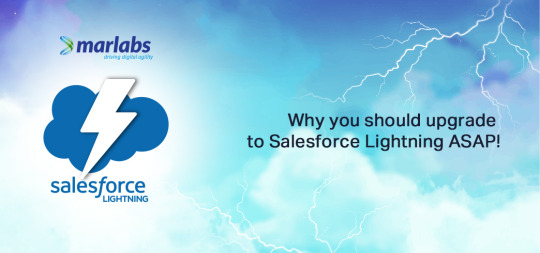
Why you should upgrade to Salesforce Lightning ASAP! - blog by Shweta Rao
Salesforce has remained consistent in its design for more than a decade. In 2015, Salesforce introduced its new platform, Salesforce Lightning, with modern UI that brings new features, increased productivity and faster deployments.
Let’s look at some of the key features of Salesforce Lightning–
New UI:
Compared to the classic layout this modern UI not only looks good, but it is more flexible and dynamic. Decreased toggle times and increased user productivity allows your team members to work more efficiently; dramatically improving user experience.
Quick App Building:
Using the Lightning components, you can build an app in very less time without the need for any codes. Components are like bricks that form the base for your app which couple with each other to form a new app. Therefore, you need not build an app from the scratch. The app developers can build the foundation of your app using the Lightning components, which can then be customized to suit your needs.
Salesforce Einstein:
Increase the productivity of sales, service and Marketing with AI. Einstein is Artificial Intelligence technology that will learn, self-tune, and get smarter with every interaction and additional data.
Sales path:
This defines the key stages that a lead needs to go through and allows the Sales rep to input important information and pass the deal through its stages for faster closure.
Customizable Homepage:
The homepage can be customized to be whatever is needed by the user. It can be customized to display the information you need the most, helping you to be more productive.
Critical Update:
Salesforce will turn on Lightning Experience on a rolling basis starting in Winter ‘20 to empower users to move faster, do more, and be more productive. Salesforce is encouraging everyone to transition to the Lightning Experience soon so that users can benefit from everything that the new interface has to offer. This update starts appearing under Critical Updates on January 28, 2019 and begins auto-activating on October 12, 2019. Source
In our experience, organizations that upgraded to lightning gained 42% saving in IT costs, increased Sales Productivity by 44%; accelerated app development by 52% and improved customer revenue growth by 37%.
Don’t wait up! Upgrade!
Marlabs, is a Salesforce Platinum Cloud CRM Consulting and Implementation partner with 100% certified team of consultants and developers who have deep capabilities on the Salesforce Customer Success Platform and products. Marlabs has been featured in Gartner’s Market Guide for Salesforce Implementation Partners in 2018. In 2015, Marlabs was awarded the Best Implementation Partner FY15 status by Salesforce ®. Marlabs has received among the highest client satisfaction score of 9.9 on a 10-point scale (independently measured by Salesforce). Marlabs demonstrated success by helping clients leverage the Salesforce® platform, get an in-depth understanding of their customers, and in turn help them sell and market smarter and faster while serving better.
Source
Follow us on LinkedIn!
#SalesforceConsultingPartner#SalesforceImplementationPartner#SalesforceIntegration#SalesforcePlatinumPartner#SalesforceSolutions#SalesforceConsultant#SalesforceCRMPartner#SalesforceLightning#SalesforceEinstein
0 notes
Text
A Paradigm Shift – Coding to No-Coding
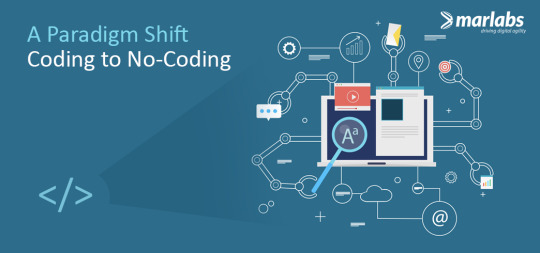
A Paradigm Shift – Coding to No-Coding - blog by Viraja
Time flies! If today I get the permission from Abraham Maslow to tweak the Hierarchy of Needs theory, I would replace “self-actualization” (which forms the highest level of the pyramid) with “36 hours a day”. Isn’t that the most important yet unachievable need of ours – to have more time?
We have moved from the traditional vegetable/grocery shopping and cooking to ‘Ready to Eat’ options. The steam locomotives have been replaced by bullet trains. We love anything that comes with the plug and play option, which finally helps us save on time. Similar is the situation with the companies who are adapting to the IT revolution. Reduced project cycle and shortened deployment phase is the key to woo customers. The eco-system is moving from Coding to No-Coding to achieve this very need. In simple terms, the dynamics between Business and IT is changing.
Every company is looking at ready-made solutions that (with some configurations) can fit into their business. No one wants to undergo prolonged cycles of customization projects that could have uncertain outcomes. Companies do not mind encountering a failure at the initial phase as rectification gets easier and can be done quickly. If we put in some more thought, we would realize that saving time is just one of the factors. The other factors would be the Cost, Maintenance, Complexity and Scalability.
How much time would be needed to complete a custom development?
How many resources will be needed to write that code?
What will be the cost involved to get it custom-developed?
Who will maintain all that chunk of code?
How will complexity of the development be tackled?
Can you ensure scalability all the time?
These are the questions that could haunt customers as it is always an overhead for them and thus, to cater to that emerging need, Salesforce offered the Force.com platform, a declarative development platform that helps in delivering rich functionalities without having to custom-develop all the time. Mere point and click features can achieve a lot. A lot of cash-rich, new age, e-commerce companies have welcomed this approach and accepted solutions that can be just plugged and played. Their main criterion is to scale up within the shortest possible time.
The companies’ goal to scale up fast could work against the whims and fancies of developers who love to code everything from scratch. The argument would be: “Hey, isn’t it easier if the entire code is at one place and anyone can follow that methodology?”
Yes, they are right. However, there is another perspective and developers have to accept that as well; how to tackle Time, Cost, Maintenance, Complexity and Scalability.
Coding has been an integral part of any software development, but even customers love it when a majority of the business requirements get accomplished out-of-the-box. For instance, using the Force.com platform, one can use workflows, approval processes, process builder and validation rules instead of the native triggers. A plethora of such feature sets are available today and its essential for every Salesforce developer to deep dive into those options and make use of them. Why reinvent the wheel?
Does that mean the era has come that will bring an end to developers and related job profiles? The answer is definitely a NO. Similar to Darwin’s theory, developers need to compete, evolve and survive. They have to transform themselves to understand businesses better. It is no more about how to write an efficient piece of code, but how to plug and play a module that caters to the business’ needs. Developers will have to slowly evolve as technical consultants who can understand the product as well as address the business requirements. Thus, meetings with Technical Heads might get replaced by meetings with Business Heads.
All these changes will be led by the transformation in Project Management Processes. SDLC (Software Development Life Cycle) will be a passé, agile/hybrid will be perhaps the ultimate-thing. For an everlasting relationship between the Business and IT, it is important for IT and its processes to change and adapt to newer ways. Only then the world will say, Business and IT lived happily ever after.
Follow us on LinkedIn!
Source
#SalesforceConsultingPartner#SalesforceImplementationPartner#SalesforceIntegration#SalesforcePlatinumPartner#SalesforceSolutions#CRMConsultant#CRMImplementation#CRMSolution#SalesforceConsultant#SalesforceCRMPartner
0 notes
Text
PROJECT MANAGEMENT: Do you have what it takes?
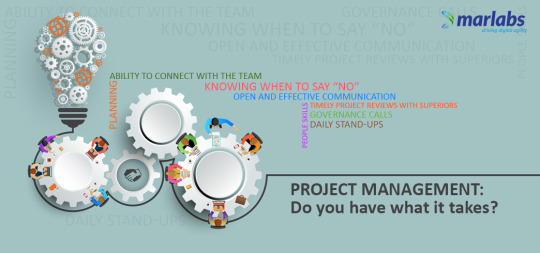
PROJECT MANAGEMENT: Do you have what it takes? - blog by Sushma Tiwaari
Companies are looking for a way to stay ahead of the pack in today’s competitive and aggressive global economy; thus, they are now turning to project management to consistently deliver business results.
So, you won a big deal. You celebrate. What’s next? Client-relationships and Client Bliss relies solely on Project deliverables and not on Sales. “The delivery of business out-comes is realized through the success of projects, and in essence that is the way that project management strategies drive organizational success,” says Adrian McKnight, PMP, program director at Suncorp-Metway Ltd.
ET Marlabs management trio – George Varghese, CEO, Sreekanth Keshava, Director & COO, and Praveen Louis, Chief Delivery Officer, ensure that the client’s voice is heard throughout the project phase, and that at the end of it, the client is smiling.
So what does it take ETians to deliver project after project with such commitment and exuberance each time?
Effective project management includes strategies, tactics, and tools for managing the design and construction of delivery processes. Excellence in Project Management is achieved through a structured process that includes multiple phases such as:
Planning
Every project starts with planning: Planning of resources, project timelines, modules to be completed in each phase /drop, etc. With a Project Plan in place, we achieve the level of granularity needed to manage the project on a day-to-day basis.
Ability to connect with the team
It is important to understand that not all resources are on the same or equivalent wavelength. The ability of a project manager lies in understanding the strengths of each team member and allocating tasks accordingly. Empathy and boosting the team’s morale also plays a significant role.
Knowing when to say “No”
“Customer is King” as someone once said, and at ET Marlabs we aptly believe so. While it is easy to nod your head to whatever is being dictated by the client, it is sometimes important to be able to say “NO” and suggest what you think is best for the project. Sometimes clients might not realize what they are asking for is not necessarily best for the project. In such a scenario, the Project Manager, has to transform into a Customer-Advocate to educate the customer about what is best for them.
Open and effective communication
Effective communication with customers is the key to a successful project. While you religiously update your customers about the progress of the project, it is also important to duly inform them of hiccups in the project or any problems that may occur in the future. It is also essential to have “hard talk” with your client if it is in the best interests of the client, and of course, the project. For instance, disagreements on what the project is expected to deliver should be sorted at the outset.
Daily stand-ups
The team meets everyday so as to bring everyone up-to-date on the information that is vital for coordination; each team members briefly describes any obstacles that stand in their way and update tasks that are completed. The daily meeting prevents a common failure mode of teams, where in the absence of an explicit occasion to share recent information, some critical knowledge may sometimes fall through the cracks.
Governance calls
A governance call is set-up with the customer and other key stakeholders, project manager, consultant (if need be) to discuss impending issues, provide direction on escalated issues, review project progress. This creates transparency and trust in the customer, thereby avoiding any future-possible escalations.
Timely project reviews with superiors
Project reviews are a useful and powerful way of adding a continuous improvement mechanism. Keeping the client updated on weekly progress helps understand the hurdles faced. If the project is struck in a particular phase or if there are delays due to the client (be it for data issues or inability to send required information by the client within the stipulated time), the project reports depict the delays in deliverables.
People skills
Ability to handle a difficult client tactfully and skillfully, and the ability to convince clients, is definitely an added advantage.
To conclude, a project can be successful only if there is a comfortable working relationship between all the team members involved. Also, there has to be a shared vision to deliver the project in the best possible way alongside effective communication with clients through the life of the project and beyond.
Follow us on LinkedIn!
Source
#SalesforceConsultingPartner#SalesforceImplementationPartner#SalesforceIntegration#SalesforcePlatinumPartner#SalesforceSolutions#CRMConsultant#CRMImplementation#CRMSolution#SalesforceConsultant#SalesforceCRMPartner
0 notes
Text
Natively Built Accelerators save effort and promote innovation
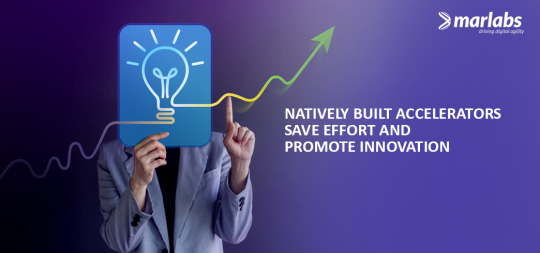
Natively Built Accelerators save effort and promote innovation - blog by Sachin Chincholi
In our experience of working on a large number of projects, most of them simultaneously,.each time but also give us an opportunity to enhance and innovate over time, rather than starting from scratch effort, has led us to think about working on reusable components/accelerators which would not only minimize the manual effort, but also give us an opportunity to enhance and innovate over time, rather than starting from scratch each time.
This set the platform for us to revisit all our projects and put a list of areas where we thought we could build them as accelerators for our future projects post discussions with mentors. We shortlisted on Lazy Loading, a natively-built solution to dynamically read the data file from other systems and create tables and associated permissions. More importantly, to initialize either the one-time upload or recurring uploads on one click of a button, without a single line of code to write.
Currently, the Beta version of the same has been tested in a couple of projects, resulting in 1/7th of the reduced effort for the module equivalent to 60~ man-hours on an average. Post feedback cycle, we would further need to tighten the nuts and bolts to make it a robust accelerator that can significantly reduce efforts in the future.
This journey has been amazing for us.
Apart from thinking about the current needs, it has also led us to think beyond. We were inspired to architect a scalable solution, which has helped in improving our business acumen, and understanding the industry needs, issues and solutions better.
Working on reusable components/accelerators has also taught us to nourish our ideas into tangible products that cater to various business needs. Lazy Loading serves across industry verticals – as it is built on a common need of flow of data from legacy system (or any existing system) into Salesforce.
Follow us on LinkedIn!
Source
#SalesforceConsultingPartner#SalesforceImplementationPartner#SalesforceIntegration#SalesforcePlatinumPartner#SalesforceSolutions#CRMConsultant#CRMImplementation#CRMSolution#SalesforceConsultant#SalesforceCRMPartner
0 notes
Text
Consumerization of Enterprise Apps

Consumerization of Enterprise Apps - blog by Sanchay Banerjee
Back in the day, you left work at work and that was it. Those days are long gone, as we now take our work with us everywhere: home, dinner dates, vacation, and everywhere in between. And it’s all because of our mobile devices.
All the things that used to be done at our work desk can now be done on our phones and tablets. You don’t even need a work-issued laptop anymore, because you can just type up that report on your mobile device that you carry around anyway. Because of this, businesses are more and more inclined to make their own Enterprise apps to work with employees’ personal devices.
This solves a few problems for employers:
It is a huge cost saving over the long haul, by having employees use their own phones rather than a separate company-issued phone. This will also cut down on employee complaints about what phone they have, since they get to make their own choice. Now, if they don’t like their phone, it’s their own fault.
By creating a ‘Digital User Experience’ that mimics what a consumer app user is accustomed to, the employee will find the application easier to work with and get more out of it. Creating an app aimed at the larger consumer market ensures a more welcoming ‘User Interface’ or UI when compared to something designed specifically for an internal audience.
By having employees use enterprise apps internally, the company is able to make sure that they are secure. This is probably the most important aspect of all, as when employees are using third party software with customer sensitive data, there is a potential for a security leak. We have all seen in recent years how damaging that can be to a company. It is always going to be in the best interest of the company to keep the data, and therefore the applications used in-house, if at all possible.
The main goal for companies continues to be making their Enterprise Applications as user-friendly as possible.
With employees using their personal phones, they will surely have no qualms about going elsewhere in the App or Play Stores to find what they need if their company is not providing it.
When it comes to productivity, employees do not feel they are in an exclusive relationship. They will date around and see whom they like best if their needs are not being met. That is why companies need to focus on their own enterprise app development and on mimicking the top consumer applications when it comes to user interface and productivity. This will keep their employees from straying, keep their bottom lines down, and keep their data as safe as possible.
Follow us on LinkedIn!
Source
#SalesforceConsultingPartner#SalesforceImplementationPartner#SalesforceIntegration#SalesforcePlatinumPartner#SalesforceSolutions#CRMConsultant#CRMImplementation#CRMSolution#SalesforceConsultant#SalesforceCRMPartner#Enterprise Applications#Digital User Experience
0 notes
Text
Perceived Value

Perceived Value - blog by George Varghese
At Marlabs, we say that a project is complete only when a customer is smiling. Project completion should be a function of clients ‘perceived value’ rather than ticking items in a scope list. This can cause a positive ripple effect of client bliss rather than mere satisfaction.
One of our first clients was a large and reputed builder. We agreed on a scope of work and completed it on time. However, on delivery we realized that the client wasn’t smiling. The situation required a third vendor to develop an adaptor before they could use our system. The client did not pay our fees and we did not ask, keeping with our ethos of client bliss. We ended up chasing the third vendor (a large multinational) for nearly 6 months, and they eventually yielded to develop the adaptor.
Lo and behold, once done we went live, and the client was truly smiling now that they would be deriving true value from our system.
It is that extra mile which counted and the client has remained loyal since. We have done a significant amount of work with them over the past 3 years. In a similar trail of thought, with respect to value and pricing, I have often wondered: “What determines the price of a product?” As is often said in the stock market, the price of something is what someone is willing to pay for it and that is once again a figment of perceived value.
This seems to be counter intuitive in the software industry as we still fill up detailed Excel sheets outlining line by line effort in man hours, adding a slice for Project Management, Testing, and finally an icing of a percentage for contingency. Multiply it with a rate card, and bingo, we have a price.
We can cloak this in a myriad of different commercial models and jargons called FP, T&M, T&M capped etc. Like it or not, it is then a question of spinning a story to match a clients’ budget, sales persons on this experimental path, cautiously, but with a larger vision of getting there someday.treaded of a software service is proportionate to the business value perceived by the client. If that perceived value is zero then we don’t need to do anything and it goes from there. At Marlabs, we gently price for the deal and the competitor in play. Where is value in this equation? Can we explore another possibility, wherein appetite target,
While putting together a proposal for one of the largest NBFC’s in India, we offered them a price that had two components:
50% of the price was fixed, and if that is all we would make, we would be ending up with a loss on the deal.
The other 50% was on the client achieving agreed business metrics, and on that we would make a 27% profit, and somewhere in between lay our cost.
Though not 100% value based, our proposal was inherently not comparable to competition, and our proposition had an intent that aligned directly to the business value we promised during the sales pitch. The client could see we were putting money where our mouth was.
Such value-based pricing should be the way of the future for software services and clients should demand this off their service providers. This would require a paradigm shift in thinking on both sides. It requires the client to have the baseline metrics for comparison while the service providers should be able to articulate their value proposition aligning to true business goals and metrics.
In summary, my strong belief is that whether it is customer service or pricing, the basic mindset as a service provider should be aligned to a client’s ‘perceived value’ rather than cost of service.
Follow us on LinkedIn!
Source
#SalesforceConsultingPartner#salesforceimplementationpartner#SalesforceIntegration#SalesforcePlatinumPartner#SalesforceSolutions#CRMConsultant#CRMImplementation#CRMSolution#SalesforceConsultant#SalesforceCRMPartner#Service Provider
0 notes
Text
You are the Brand you Buy — The Power of One
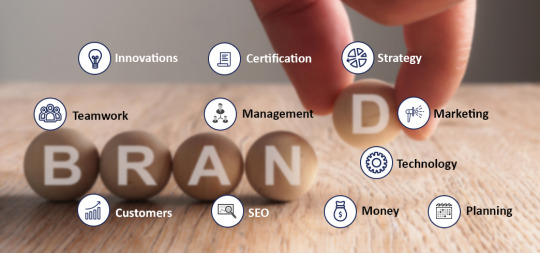
You are the Brand you Buy — The Power of One - blog by Manoj Nair
Brands today need a strong reference to user experience than any big celebrity endorsing it.
The collective voice generated socially, superior buying experience and greater after-sales service will, in my view, create an evolving brand persona that will reflect the Power of One (that single prospect/customer/user). In today’s hyper connected world everyone has a face and a voice that a marketer is forced to see and hear. That’s the power of ‘Social’ and YOU are the BRAND. What she thinks about your brand is going to be supremely important as opposed to any persona composed and imposed by any marketer. Those days are gone.
The buying experience does not start at the Point of Sale (Bricks and Mortar or Online). In my view, it starts at the Point of Social Reference fuelled by mobility of information accessed on any device appropriate to your context at the Point of Thought (I think I need this or want this).
Marketers are no longer in control of the brand message. At best, they can only synthesise and connect the social dots coming at them.
Mind Share for a Brand is crowd sourced today on social platforms. Marketers are no longer in control of the brand message. At best, they can only. synthesize and connect the social dots coming at them to create a brand persona that is derived from the cumulative experience of the crowd searching, buying and experiencing their products and services
Which brings me to another critical paradigm shift that completes this thought.
Traditionally, after-sales service is a separate bundle thrown in with a product or service starting from a Warranty/Guarantee – “I will choose what is free and paid for, and I am doing you a favour anyways!” – period progressing to either an Annual Maintenance Contract or an episodic pay as you go: “I will choose what I can do for you, when, and decide what you pay, and this will be a brilliant profit centre for me, and a cost ”centre for the hapless customer during the life cycle of the product.
This is what I call the Model of Diminishing Customer Experience (a bit like the classic economic Theory of Diminishing Returns) to a point where many consumers, at the fag end of the life of the product, will switch brands when they need to replace the product. The shift that we will see, will be from a perspective of treating every buyer as your Consumer-for-Life. Customer-for-Life, which is a much bandied for someline, .brands tag doesn’t sound engaging enough from a user perspective
In this model, every brand will be co-created by the company that offers a product/service and you and I who will consume it. In other words, every brand will be a reflection of a co-created experience. The brand will be relevant to the experience it offers right from the Point of Thought to the Point of Social Reference to the Point of Sale to the Point of Use – throughout its entire life cycle, and then to the Point of Replacement.
It will be a virtuous cycle of continuous and reliable improvement, innovation and evolution catering to an ever changing set of consumer expectations in the brave new world where every single consumer is the face of your Brand defined by her experience.
In my next article, I will highlight how the CEO and Marketer of today should focus on uber Consumer Experience to co-create a Brand with YOU and not the other way around. More importantly, how technology enables this.
Follow us on LinkedIn!
Source
#SalesforceConsultingPartner#SalesforceImplementationPartner#SalesforceIntegration#SalesforcePlatinumPartner#SalesforceSolutions#CRMConsultant#CRMImplementation#CRMSolution#SalesforceConsultant#SalesforceCRMPartner#Digital Customer Experience
0 notes
Text
The launch of Salesforce Lightning App at Dreamforce
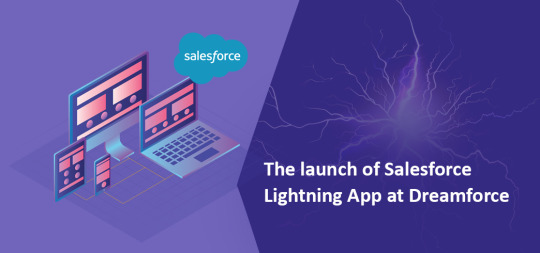
The launch of Salesforce Lightning App at Dreamforce - blog by Ram Kangyampeta
(This blog was written after attending 2015 Dreamforce event)
Dreamforce, an event with 170,000+ attendees and over 1,700 sessions was an exciting event to be part of. Launched at the event was Salesforce’s latest offering that epitomizes speed and is aptly named “Lightning.” An innovative, customer-focused concept that is poised to become the next big thing in the app world and during the time of digital transformation.
Better and faster engagement is the need of the hour and the Salesforce Lightning platform meets this need. As the main product focus of the event Dreamforce conference, Lightning wowed and thrilled all those in attendance. Making the platform a reality was a fascinatingly diverse group: system integrators, software developers, MVPs, Salesforce Administrators, and folks from the Salesforce Success Community.
Dressed appropriately in a Lightning-inspired, one-piece body suit, Salesforce co-founder Parker Harris talked about how the solution is helping customers develop better and more reliable, connected apps, faster, with the use of simple drag and drop utilities. Leveraging Trailhead, a free tutorial platform, customers can develop Salesforce apps while taking advantage of the over 50 prebuilt Lightning Exchange elements available on the AppExchange portal.
Another key announcement at the event was the global partnership between Sage and Salesforce. Also introduced was a new service from Sage called Sage Life that is built on the Salesforce platform-as-a-service, designed to help small businesses move to the cloud.
Optimized for mobile and social, Sage Life aims to help smaller companies integrate their customer, accounting, payroll and finance data in one system that is accessible from any device and from any location. A mobile control center enables employees to view data in real time, and the system’s social focus helps connect colleagues, customers, partners, suppliers and other stakeholders.
“Today’s news reimagines the business of doing business for SMBs,” said Sage CEO Stephen Kelly. “What this does is give every employee real-time information on the Apple watch or the device of their choice. It’s as important to SMBs as the iPod was to consumers.”
Sage is aiming its new system at the 15 million or so businesses around the world with between 10 and 200 employees, Kelly stated. It is scheduled for general availability this summer, and Kelly said he hopes a Sage app store won’t be far behind.
Meeting Kelly gave me a sense of the sheer energy that he exudes, which is evidently what makes Sage the leader it is today. My conversation with him gave me added insight into how companies like Sage stay ahead of the continuous stream of disruption in the market place.
Several more path breaking announcements at Dreamforce went to show why the Salesforce world continues to be the most happening place in the IT ecosystem. It was impossible not to walk away without a sense of awe as to what Salesforce has accomplished in the last few years. Clearly this Dreamboat has a lot of wind in its sails with many more ports to call.
Follow us on LinkedIn!
Source
#SalesforceConsultingPartner#SalesforceImplementationPartner#SalesforceIntegration#SalesforcePlatinumPartner#SalesforceSolutions#CRMConsultant#CRMImplementation#CRMSolution#SalesforceConsultant#SalesforceCRMPartner#CRMPlatform#Dreamforce#SalesforceLightningPlatform
0 notes
Text
Super charge your most talented wealth management FAs: Augmented Intelligence

Super charge your most talented wealth management FAs: Augmented Intelligence- blog by Don Yerger
Business is booming for wealth management firms. There is a lot of wealth out there and not enough talented financial advisors to provide quality advice and services. Much of the talent is consumed with Ulta High Net Worth (UHNW) customers. But how do you spread that talent to more of the wealthy masses? Wealth Management is fueled by smart people… very busy smart people. Smart investors (or admittedly not so smart investors) looking for smart advice from smart financial analysts. “The industry is already racing to maximize productivity,” Says Oliver Bussmann CEO of Bussmann AG Advisors. “How many assets under management can you manage as a financial adviser? Even in the high-net-worth environment, you have to think about how much can you automate and drive efficiency while not losing that personal touch.”
So how do we spread the wealth (pun intended) of our limited pool of smart Financial Analysts? To answer that question let’s first look at what an FA does. We’ve listed them in priority order:
1. Prospecting
2. Servicing Current Clients
3. Financial Planning
4. Administrative and Compliance Tasks
5. Continuous Education
Let’s focus on the top two. Since one of the key aspects of an FA that effects the customer experience is interacting directly with customers our priority is mainly based on the personal touch. The most critical areas to growing an FA’s Book of Business, a “side effect” if you will of excelling in delivering the highest quality personal touch is Prospecting and Servicing Current Clients, building and managing client relationships. These might also be considered the most critical areas to improving the customer experience and thus retaining customers.
• Understanding client’s goals and fears
• Understanding markets
• Understanding the client’s assets and associated compliance rules
• Understanding the client’s industry
• Understanding complex compliance rules
“Understanding” is a key word here. Many successful FA’s focus on a type of client. The FA may have a head start in “understanding” if they also have similar experience as the client. For example, an FA may focus on the following types of High Net Worth Individual (HNWI) profiles:
• Successful and retired athletes
• Industry specific Business Owners
• Startup business owners and/or CxOs involved in VC’s, complex stock issues, mergers, acquisitions (with sub-focus areas (e.g. software, hardware, professional services…etc.)
• Members of high net worth families
Despite the head start and focus, each one of these categories involves processing massive amounts of data and synthesizing that data into actionable information from multiple sources. Not to mention there is great benefit in understanding at least some topical information across and beyond these areas into other financial service subject areas. According to Aite Group, in occupations where processing data has become relentlessly time-consuming workers are quickly reaching “peak human capacity”. Considering that data analysis is one of the key strengths of AI and the advent of robo-advisors (see https://en.wikipedia.org/wiki/Ro...) why not replace the FA for the wealthy masses allowing the human FA’s to service HNWI’s? Excuse me for stating the obvious, but it’s because people trust other people, they build a relationship with, a person or adviser that is like them, and that has shown them they can provide trustworthy advice and services in the areas that matter most to them. The areas of focus above are built on personal relationships. For example, would a retired athlete be more likely to trust a robo-advisor or another successful retired athlete that has deep experience in Wealth Management? It’s the human touch.
It starts in the prospecting phase by projecting the image of quality and professionalism. Then the follow through into servicing clients by turning that projection to reality, delivering the quality services (the “actions”) associated with and exceeding the expectations set, delivering a great customer experience. Perhaps this is the most critical application of the human touch. The ability to educate clients and convince them to do the right thing will substantially impact the overall success, and potential liability, in this business. (For more, see: These Firms are Tops Among Financial Advisor Clients.) Consider also that many other aspects of an FA’s responsibilities are dependent on these skills, negotiating with wholesalers, compliance officers, regulatory officials and customer service representatives who may or may not be in the mood to help when needed. The ability to maintain a good relationship can make the difference between an inconvenience and lost business. No wonder the most talented FA’s are spread so thin.
If the FA cannot be replaced how can automation help?
“No man is better than a machine, and no machine is better than a man with a machine.” — Paul Tudor Jones
AI and machine learning is also very good at improving the performance of people, FA’s included. AI is to data analysis as a bicycle is to running. Let’s look again at the top two daily activities of an FA. Then we can illustrate where AI can provide “augmented intelligence” to give us the super FA’s that can exceed peek human capacity.
First, AI can look at a limited set of transaction data about the FA’s clients and prospects, then combing huge amounts of external data to predict what the best next action should be.
Salesforce a CRM cloud platform used by many wealth management firms (e.g. Openheimer, Stifel and Morgan Stanley) provides AI solutions for Wealth Management. These firms and others utilize core Salesforce products for FA’s within their organization to improve the performance and “spread the wealth” of talent: Sales Cloud for prospecting; Service Cloud for servicing current clients; and Community Cloud for brokerages utilizing services provided by wealth management firms. Community Cloud is used to control the exposure of applicable customer data and services to brokerage FA’s. Einstein is Salesforce’s suite of AI products that run within Sales Cloud, Service Cloud and the Community Cloud. Let’s see how Einstein is helping FA’s with prospecting and servicing the Client.
Prioritization of prospect and client calls or meetings:
Let’s take retired or retiring athletes as our first example. An FA may spend most of the very early hours of the morning analyzing the newspaper and news feeds. Is an athlete recently retired or about to retire? Is an athlete just started to become prominent in their sport? There’s a lot of athletes out there, and a lot of sports. Combing the news is one way to find out and this can be very time consuming for an FA. AI can take current information about a client and comb sports news to uncover trends in athletes’ careers advising the adviser in identifying and prioritizing prospects. The FA is provided with a recommended prioritization with the background information driving the prioritization first thing in the morning.
For high wealth families AI can predict if any of their children are reaching an age where a trust fund needs to be set up? Have any significant changes to asset values occurred? Have any state or federal laws changed effecting taxes? This may be easy for a few of the portfolios managed by the FA, but the task becomes exponentially harder as the portfolios increase.
Looking at business owner focused FA’s, uncovering mergers and acquisitions will quickly identify new prospects or existing clients to contact.
AI can recommend a prioritization of contacts for the day and provide the reasons for the prioritization, allowing the human FA to adjust the criteria or weights. The FA may continue to do similar data activities for potential top prospects, but Einstein is now able to widen the number of prospects an FA can research and dig deeper into data associated with top prospects.
Similarly, Einstein AI can predict the Next Best Action for a portfolio:
What prospects or clients should be called today based on current events or known client events? What background information is key to understand before calling the prospect or client?
At Dreamforce this year Salesforce has announced two new Einstein features. One is called Next Best Action and runs on the Sales Cloud, Service Cloud and Community Cloud. When an FA is reviewing the prioritized list of prospects or clients Einstein uses an easy to set up machine learning feature to predict the Next Best Action that the FA should take.
The other solution is called Einstein Prediction Builder. Since Einstein was released a few years ago, Salesforce has provided AI and Machine Learning features that could be turned on by business admins, basically by just turning it on. All model building is handled behind the scenes, so that the business admins don’t need to be PhD data scientists. Now that some business admins and technical admins have a working knowledge of applied AI and Machine Learning, Einstein Prediction Builder now allows more sophisticated model building by business subject matter experts that know a company’s data and what is the most impact full way to process that data into actionable information. Einstein Prediction Builder does this all without Salesforce integration to other AI systems. Although it requires an additional license to turn it on, it comes with the Salesforce cloud solutions. Many Solution Integrators, including Marlabs offer Salesforce consulting expertise that can be leveraged by a company new to AI and Machine Learning looking to leverage Einstein.
The tools are available to augment your best FA’s to provide the highest quality of wealth management to more of your clients, perhaps even improving the best FA’s to super FA’s!
Source
#Artificial Intelligence#FIntech#Machine learning#Salesforce consulting partner#Salesforce CRM#Salesforce CRM partner#Salesforce Implementation partner#Salesforce platinum partner#Wealth management
0 notes
Text
Cyber Threat Intelligence: Are We Safe?

Cyber Threat Intelligence: Are We Safe?
There have been several concepts or definitions around what cyber threat intelligence is; Gartner defines it as evidence-based knowledge with the inclusion of mechanisms, implications, context, indicators, and actionable advice against an emerging threat or hazard. It’s an example, and while it is a good definition, the question remains – what does it mean or imply? How can threat intelligence benefit us, even?
The Illusion of Threats
In today’s world, the word itself has lost meaning, often abused for situations beyond the boundaries of its conventional definition. Threat. That’s right.
What organizations fail to realize is that a threat to one organization may not necessarily translate as a threat to another. Often, this results in the allocation of security resources in all the wrong areas. Some might even spend too much time on processes such as vulnerability or risk analysis, instead of working on the underlying matter of fixing or mitigating pre-existing issues.
In reality, there are a combination of things required to spur a threat into existence. Three words – intent, capability, and most importantly – opportunity. Without this combination, the assumed threat is not actually a concern, at least at that point in time. Let’s look at these three components in a little more detail:
Intent: An attacker’s desire to target you or your organization
Capability: The ability or means of an attacker to pull off an attack (specific malware, for example)
Opportunity: The opening an attacker needs; vulnerabilities in software, hardware, or personnel
To put things into perspective, should an attacker possess the necessary intent and capability, but find the organization impregnable, no opportunity, the threat is non-existent.
Threat Intelligence: What is it?
Threat intelligence is usually presented in the form of threat feeds or Indicators of Compromise (IoCs). But, effective utilization of said intelligence requires an organization to understand themselves first, and then the adversary. Know thy enemy; it’s what Sun Tzu would’ve said.
If an organization fails to understand its infrastructure, business operations, personnel, and assets, it also fails to understand or identify the presence of an opportunity for attackers. In most situations, a lack of this understanding leads to the mis-identification of an attacker’s intent.
On the other hand, capabilities are easier to identify, considering public information and effective use from time to time, more commonly – phishing emails. A good threat intelligence platform may even be able to identify novel capabilities, including the trends behind usage and target specifications. But unfortunately, despite progress in the fields of cyber threat intelligence, an organization fails to gain the most out of their intelligence when lacking in the butter and bread of basics.
In simple terms though, cyber threat intelligence is analyzed information around the intent, capability, and opportunity of attackers. A threat intelligence platform identifies threats, but this intelligence requires analysis as well to understand if it is valuable to said organizations.
Such scenarios beg for planning. An organization must be able to identify what information is applicable to their situation. Someone must be in place to make those decisions, to understand if the intelligence is applicable even. It could be a vendor tailored to your needs, or even a customer; ideally, it will be both. But if there is zero customization, threat intelligence falls to become an inapplicable abundance of data.
At Marlabs, we understand the value behind sharing threat intelligence and strategic choices. After all, the ability to utilize tailored threat intelligence provides actionable tactical and strategic choices that impact security. That’s where threat feeds or Indicators of Compromise step in.
Threat Feeds and IoCs
They call strategic intelligence abstracts – abstracts of data that identify certain threats, and the course of action required to mitigate the same. It enables smart decisions around allocation of budgets and focus areas for personnel.
On the flipside, tactical intelligence is acquired through attempts to collect accurate network information, analysis of said information, and in the identification of threats along with response methodologies.
A basic understanding around strategic and tactical intelligence allows for organizations to utilize IoCs to its full potential.
At the end of the day, there is no real way to cover everything via cyber threat intelligence. Even the best of platforms fails at it. The key is in understanding the basics, and a great threat intelligence platform does go a long way towards upgrading upon those basics. Why restress the matter? Well, now you know that intelligence is worthless without the ability to identify insights most in line with your organization’s present situation.
The basics already eliminate an innumerable amount of threats. And you really don’t need to jot the basics down to perfection. You just need to reach a point of zero ROI around the basics before moving onto more complex methods.
As Sun Tzu once said, know thyself, then the enemy. As difficult as it may sound to accomplish these two things, in combination, it returns the upper hand to the defender. All it requires is a strong approach towards what’s necessary, and an eye to discriminate hype from fact.
Source
#Cyber security#Cyber threat hunting#Cyber threat intelligence#Cyber threats#Digital security#Threat feeds#Threat intelligence#Threat management
0 notes
Text
Salesforce® Platinum Partner – What it means to Marlabs, Clients and Prospects?
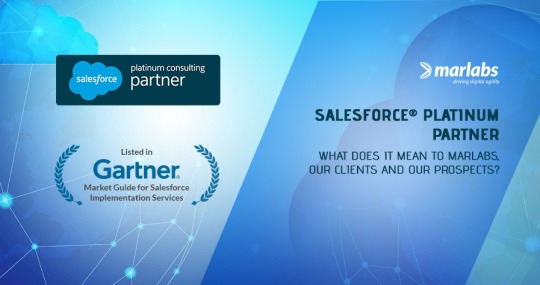
Salesforce® Platinum Partner – What does it mean to Marlabs, our Clients and our Prospects? – blog by Arijit Ray
Marlabs, is a Salesforce Platinum Cloud CRM Consulting and Implementation Partner with 100% certified team of consultants and developers who have deep capabilities on the Salesforce Customer Success Platform and products. Marlabs has been featured in Gartner’s Market Guide for Salesforce Implementation Partners in 2018. In 2015, Marlabs was awarded the Best Implementation Partner FY15 status by Salesforce®. Marlabs has received among the highest client satisfaction score of 9.82 on a 10-point scale (independently measured by Salesforce). Marlabs demonstrated success by helping clients leverage the Salesforce® platform, get an in-depth understanding of their customers, and in turn help them sell and market smarter and faster while serving better.
But what does all this mean to Marlabs, our Clients and our Prospects?
Let’s assume you’re in the market for a Customer Relationship Management (CRM) solution, a Marketing Automation solution or may be a Sales and Service solution that’s on the cloud and decided to go with the popular choice of Salesforce. Your next step would be to look for a qualified and certified consultant and implementation partner to go with. With every partner claiming they are the best; it can get really confusing to select the right Salesforce CRM Consulting and Implementation partner. Let me help provide some guidance in your Salesforce Partner selection process.
Salesforce® categorizes their partners in various levels like Silver, Gold, Platinum (like Marlabs Inc.). But how does this affect and benefit you as a buyer?
Salesforce® created these standards and levels based on Partner Value Score (PVS) and evaluates their partners based on these. The PVS are based on 3 main criteria that are measured over 12 to 18 months based on –
Sales
Expertise
Customer Satisfaction (at Marlabs we call it “Customer Bliss”)
Source
Sales - Higher sales numbers mean more business and more experience out of projects. Salesforce rewards and recognizes partners who has worked on different types of projects and has an in-depth knowledge on implementation. Salesforce also recognizes partners who specialize in certain clients like Mortgage, Lending or Non-Profit. Marlabs for example has worked on ~500 projects globally.
So as a prospective buyer – you know that the Salesforce CRM Consulting and Implementation partner knows their stuff and will do an excellent job.
Expertise – Salesforce measure expertise by the number of certifications held by the partner’s employees. These include certifications for Salesforce Sales Cloud, Salesforce Service Cloud, Salesforce Platform Developers, Salesforce App builders and Salesforce consultants, etc. Salesforce Partners with deep expertise and diverse knowledge (like Marlabs with a 100% certified Salesforce team) are in a better position to serve their clients.
As a prospective buyer – you get the confidence of working and relying on a team of specialized, highly skilled and knowledgeable individuals; and be rest assured that there will be no gaps between what you need and what they will deliver.
Customer Satisfaction (or Customer Bliss as we like to say it) – It is measured by Salesforce through surveys. Salesforce rolls our surveys to past and current clients to understand who is providing the highest level of service and support. Marlabs has a Customer Satisfaction score of 9.82 on a scale at 10 (as measured by Salesforce).
As a prospective buyer – you understand the level of commitment and dedication the Salesforce CRM Consulting & Implementation Partner has towards delivering the absolute best from the word go!
Here is a short video summing it all up - Marlabs | Salesforce Platinum Cloud CRM Consulting and Implementation Partner
A little about Marlabs’ Salesforce Platinum Cloud CRM Consulting & Implementation Services
The most evident quantifiable measure is Salesforce certifications, and Marlabs marks a presence there with a 100% certified team. Our team comprising of Architects, Consultants, Senior Developers, Developers and Testers who hold multiple certifications across different cloud offerings from Salesforce. At Marlabs, we lead with our Salesforce Consulting Services to help our clients by bringing in best practices and cross industry perspectives from over 300 Salesforce implementations across 15 industries and 100+ customers.
Gartner recognizes the capabilities of Marlabs for our expertise in Salesforce CRM Strategy, Salesforce Sales Cloud, Salesforce Service Cloud and Salesforce Platform. In addition, our Accelerators are ready-to-use solutions that give a competitive edge to our clients, as they trim the implementation time schedules, thus reducing the client’s go-to-market time.
With our reach across geographies, we have vast experience from a diverse range of projects implemented in the US, Canada, India, Australia, Japan, Africa, UAE, Maldives and the UK. At Marlabs, we exercise a scalable approach tailored to the nature and scope of the engagement.
While all major partners may have Salesforce Sales Cloud and Salesforce Service Cloud capabilities, their depth of knowledge, experience, investment and scale for other Salesforce products and features, such as Salesforce Lightning, Salesforce Marketing Cloud, Salesforce Community Cloud and Salesforce Commerce Cloud, may vary.
We love to solve complex business challenges, and at the end of a project, keep the customer smiling. As a Salesforce Platinum Partner with a repertoire of notable brands and successful outcomes, our focus is on delivering ultra-high quality, cloud-based, CRM solutions and services that cater to the dynamic pace of an ever-evolving business environment, within the shortest possible time.
We work to deliver Client Bliss, one of our highest values, that goes above and beyond the high CSAT scores we measure ourselves with. In our world, a project is complete only when the client is smiling.
We provide our clients with a wide range of offerings that span various business functions like Sales, Service, Marketing, Finance, HR, and Administration.
Marlabs is different from many other Salesforce Platinum Partners in the world. Our unique methodology ensures that project timelines are split into two-week delivery cycles to ensure business relevance and keep client participation at its best.
Led by a team of professionals who have 200+ years of combined IT/ITES experience across industries and geographies, we have built deep capabilities on the Salesforce™ Customer Success Platform across products, solutions and services.
Our clients have benefited from several aspects of our experience that includes, deep platform knowledge, cross industry experience, user-centric approach to understanding business, on-site expertise, experience in the implementation of complex projects and our in-house Technical Council.
Marlabs’ developers hold multiple certifications and have vast experience from a diverse range of projects implemented in the US, Canada, India, Australia, Japan, Africa, UAE, Maldives and the UK. Many hold multiple certifications, including those of Architect, Consultants, Senior Developers, Developers and Testers.
Our Technical Accelerators are ready-to- use solutions that have emerged from our vast expertise across 15 industry verticals that have used Salesforce™. The accelerators give a competitive edge to our clients because they cut down the Go-Live time schedules, thus helping reduce the client’s go-to-market time.
Would you like to know more? Simply click HERE
Source
#Salesforce platinum partner#Salesforce platform#Salesforce Implementation partner#Salesforce CRM partner#Salesforce consulting partner#CRM solution#CRM consulting
0 notes
Text
UX Design Impacts the Bottomline. No Question.

UX Design Impacts the Bottomline. No Question.
Business interactions have moved online, making it critical for companies to offer a friction-less and seamless Digital User Experience. Today, users consider an optimized user experience to be a basic requirement. In turn, companies have begun to treat UX design as a prerequisite implementation strategy across different devices and platforms.
The premise is to understand the reason behind why customers visit a site, and if what they discover benefits both them and the business. This methodology provides brands with the rationale to an optimized digital user experience. Companies can now impact their businesses more effectively with the application of targeted campaigns and strategies throughout its digital ecosystem.
A study by Forrester Research cites a 200% improvement in the conversion rate as a direct result of a well-designed user interface. This number skyrockets further to 400% against better constructed designs. The metrics speak for themselves. There are companies quick to adjust, but for those slower to adapt, a change might require fresh perspective, hard numbers, and a quality review of the digital environment. Here’s how you can go about it:
The Case
UX optimization can improve brand recognition, enhance user retention, and build trust with the audience at a faster than normal pace. At Marlabs, we understand the challenge around driving the importance of UX design to stakeholders that are swayed by numbers alone. But there is a simple way to uncover UX ROI, and that is by comparing before-and-after results post implementation.
In analogy, one may look to the book authored by Robert Pressman, Software Engineering: A Practitioner’s Approach, which highlights that every dollar spent to resolve a problem during design magnifies to $10 during development, and perhaps $100 or more after the product’s release. Likewise, every dollar invested in UX early on is the what’s most cost-effective.
This is interesting because, an eye-tracking study by the Missouri University of Science and Technology states that it merely takes 2.6 seconds for a user’s eyes to land on that area of a website most likely to influence his or her first impression. After studying varying factors such as time taken to focus on important sections of a page, logos, menu, social media icons, and more, researchers concluded a strong correlation between high user engagement and first impressions.
Interestingly, first impressions are often always about design 94% of the time. When British researchers assessed how information and design influence the trust of online health websites, it revealed the latter to stand the primary driver of user-based first impressions. In today’s world, a poor experience design is easily associated with the rejection and mistrust of the brand.
Consider this an important case, because Barry Staw and Ha Haon – two economists – believe that first impressions last for years.
The Approach
It’s important to understand which conversion and UX strategies work for a specific brand or business. Companies might look to competitors for implementation-based ideas, which may or may not be ideal; reason being that UX impacts different target markets differently. An effective digital user experience begins with analysis, a comprehensive look at your own business strategy and how your customers interact with it.
An interesting part about UX design, often overlooked, is responsiveness. Users are known to prefer cross-platform or cross-device compatibility.
There are two scenarios to consider here; for example, a SaaS application could technically run on any internet-capable device with a browser, but regardless of similar core functionalities across devices, the possibility of varying experiences is bound to persist. This is why Google Docs on a desktop feels different than using it on a smartphone. And if your solution is marketed as being accessible from anywhere but is a chore to use on devices other than the desktop itself, you could expect significant churn.
It’s easy to conclude with just this example that user experience design has a significant impact on conversion rates. On the flipside, if an application is seamless across devices and is enjoyable to engage with, users are also less likely to churn. Effectively, a responsive design is simply a means to maintain your brand experience across different platforms.
The Closure
At the end of the day, UX design simplifies complexity – it creates a story that leads a customer from one stage to another, optimizing the chances for a closure or conversion. UX strategies redefines company-customer relationships and interactions beyond the digital ecosystem even. It applies to both internal and external operations, with several companies reporting lowered cost of customer acquisition, improved customer retention, reduced training costs, and increased market share and sales.
Businesses living within the digital ecosystem benefits from the process of user experience. And user acceptance is crucial regardless of whether it’s a service, product, or project; needless to say, positive user experiences lead to a loyal customer base. In turn, these customers transform to become your biggest brand advocates and ambassadors.
Summary of Everything Written:
Digital User Experience, in combination with a solid user interface, can help you win the trust and confidence of your customers.
Your website and online presence represent your brand, and a good UX establishes your brand name in the market. Usability, in addition to an attractive and seamless interface, is bound to help your organization race ahead in the digital world.
The primary aim of working on user experience is to optimize design and present an experience that can satisfy your user base.
Your bottom line can get an enormous boost, skyrocketing future growth, with the right aspects of UX and UI.
In conclusion, UX now possesses the ability to transform business models, thereby becoming a necessary part of our everyday existence and the evolving digital landscape.
Source
0 notes
Text
First Step Out of Science Fiction: Internet of Things

First Step Out of Science Fiction: Internet of Things - blog by Sanjay Vidyadharan
It might be appropriate to change the classification of next-generation technologies. With widespread adoption and several companies reaping benefits from its use, the technology itself is more present than “next-gen.”
Think about it, in 1984 when Arnold Schwarzenegger starred in The Terminator, the very idea of artificial intelligence was nothing more than science fiction. Today, with enough effort, it’s easy to find at least a variant of its implementation around you. The internet of things is much the same, now holding the potential to topple traditional processes.
IoT is a little strange in that regard. It’s never been a standalone concept, functioning more as an encapsulation of all the other next-generation technologies.
But keeping industry pundits, ominous studies and even Stephen Hawking with their predictions of a technology takeover aside, a business works with more down-to-earth objectives, such as turning a profit or gaining customer satisfaction. In that regard, the internet of things is well on its way of stepping out of the realm of science fiction.
Gartner predicted a 31% increase in the number of connected devices in 2017 from 2016, approximating to around 8.4 billion devices. That number is expected to hit 20.4 billion by 2020. Given that scenario, expect IoT to impact your business significantly.
Let’s break down how this will happen.
Real-time data
Data loses value with time, and the more recent it is, the more optimized you are in your processes. For example, with crude gasoline tanks, an employee usually had to physically drive to the tanks — maybe miles away — and investigate the levels, identify inefficiencies and relay information regarding issues needing amendment back to the supplier.
With IoT, the truck, the tank and the physical reader feed into a connected application. This enables the reporting of real-time data with the tank, even if they are thousands of miles apart. The internet of things allows for a unique way of conducting business with suppliers. In a nutshell, by taking the waste from overproduction or by identifying situations of shortage, you lower your business’ cost structure significantly.
It’s just one example, but there’s no denying that with the adoption of IoT, businesses are in line to efficiently impact their bottom lines.
The internet is expanding
We are in an age of global shrinkage; communications are faster, and the internet consumes data with blinding speed. Machines in constant and rapid communication — albeit a frightening idea as a parallel to science fiction — allow for immediate and effective action. Call it faster problem-solving.
Google Maps is also a result of constant device communication, and it’s the same with traffic analysis via predictive analytics. From an emotional standpoint, IoT could save lives as well.
Take the example of a truck on a relief mission with food supplies. In the olden days, it wasn’t outside the realm of possibility for the driver to get lost midway. Not a good situation to be a part of, but IoT allows for lowered wastage with better planning, and even the identification of better avenues for helping people.
The dangers of universality
While not as severe as cyborgs with machine guns, there are some concerns about real-time access to analytics and information. The possibility of data breaches, security and even cyber threats is concerning. Another potential glitch people often overlook is the loss of connectivity.
The internet, despite various advancements around it, does lose connectivity due to factors such as weather. In fact, the idea itself discourages an over-reliance on IoT.
It’s important to consider this point, regardless of your stance on technology — especially one such as the internet of things. There is merit in understanding both the advantages and disadvantages of its implementation.
In conclusion, it’s easy to state that IoT is critical for business owners to understand and act upon now more than ever before. The internet of things is universally pervasive, rapidly expanding and you’re either on the train that leads to business growth in the modern era or at the station of traditional yet inefficient methodologies. It’s probably a better idea to get on.
Source
0 notes
Text
User Experience Design in the Modern Digital World

User Experience Design in the Modern Digital World
Business holds a different meaning today, especially given the digital era. It’s fast-paced, and priorities are more dynamic than ever before. On a broad breakdown, it could hover around aspects of increasing customer engagement, bolstering your brand identity, and identifying possibilities for new revenue streams.
A broad breakdown, of course. In the first decade of the twenty-first century, this required years of strategic debate, some leading to market dominance, and others to redundancy. But in the digital era, these goals are being accomplished increasingly through design implemented for easy interaction between the customer and the brand.
After all, when it comes to the effectiveness of your digital product or business, nothing today stands as more important than offering your customers excellent digital user experience.
The Beatles, to this day, moves millions of souls to the tune of their music, and Michelangelo’s masterpiece – The Last Judgment – continues to inspire everyone who ever visits the Sistine Chapel. A well-defined user experience design does just that for your business or product. It’s no longer enough to be just good enough, and anything less than a spectacular digital user experience is what leads to unhappy future customers.
You don’t want that!
An excellent digital user experience implies something intuitive and easy, something that is fun and unique. You want customers to have the best experience imaginable, incentivizing future interactions and enabling a window for valuable feedback, which happens to be critical information important for sustained business success.
Over the years, research unveiled companies with a determined focus on digital user experience perform better financially. What could the reason be? Well, it could be because of lowered price sensitivity, positive word of mouth, and greater retention. In turn, expenses for these businesses are lowered with fewer complaints, reduced acquisition costs, and fewer customer service requirements.
It’s always been one of the best ingredients to a business’ formula for success – User Experience Design. And it’s why you should focus on it from the very start of the planning phase.
Source
0 notes
Text
Breaking Down Cognitive Computing | What’s it all about?

Breaking Down Cognitive Computing | What’s it all about? – blog by Jay Nair
Cognitive Computing is often used interchangeably with artificial intelligence, not that it’s entirely incorrect. MIT Sloan School of Business, for instance, defines the term as a system that adaptively utilizes underlying algorithms or processing with exposure to new data.
It wasn’t always a hot trend though. The present dictates, otherwise, with much of the steam being attributed to the:
1. Massive Computing Power of New-Generation Computers
2. Greatly Increased Capacity of Storage Devices (Petabytes of Data on Cloud)
3. Effortless and Fluid Access to Digital Data
This was an expected outcome, with the concept and potential of cognitive computing having existed for decades. Today, Amazon Alexa, Apple Siri, IBM Watson, Google Go, and more stand to drive awareness around ideas of cognitive computing. While applications exist for both the end consumer and enterprise, the latter requires a heightened focus on precision and accuracy.
Is Cognitive Computing Business Ready?
Cognitive Computing isn’t a universal solution to problems, neither is it omniscient. The technology is most effective with narrow and well-defined tasks. As an example, take an insurance company amid auditing its reimbursement claims; while the rules for reimbursement are largely exhaustive and complex for human comprehension, they are well-defined and therefore well-suited to Cognitive Computing.
How Data Defines Outcomes
Data is critical to successful cognitive outcomes – the more qualitative the data, the more successful the outcome. At the same time, low-quality data is bound to produce unreliable or ineffective outcomes.
Cognitive Computing also becomes ineffective in the face of dynamic or rapidly changing data, which implies the possibility of relevant data becoming irrelevant quickly. This diminishes the value and credibility of the insights generated. Presently, use cases with rapidly fluctuating data are not considered good for Cognitive Computing.
Identifying the Human Component
Cognitive Systems is an augmentative technology and requires human support to become effective. During infancy, the technology is known to produce incorrect outcomes, which is why human intervention mandates itself to a 4-6-month training period depending on the situation.
At the end of the day, humans teach Cognitive Systems right from wrong, allowing better learning and growth for more accurate future predictions.
Conclusion
Cognitive Technology is part of a larger digital evolutionary cycle. It starts with a company seeking digital transformation; perhaps with the identification of manual processes that require automation. With an evolving marketplace, several technology companies – such as IBM – offer automation engines designed to convert manual processes into automated processes. You can call this the foundation for a digital enterprise.
In time, and with a certain level of maturity, organizations can apply analytics to derive insights and improve outcomes. It might start with being descriptive, providing insights into past events. But with enough data sets in addition to analytic-insights, data sets transform, becoming patterns and then sets of patterns usable to predict future events and outcomes. With predictive analytics, Cognitive Systems start to emerge.
As a technology, Cognitive Computing is more robust than it was in the past, expanding rapidly into both end-consumer and enterprise avenues. We now see positive use of the technology in financial, healthcare, and other fields. This is just the beginning. It holds the potential to support humans in enabling effectiveness and efficiency around important and creative work.
Does that sound like too daunting a task? Well, you could always start by improving mundane processes within your firm and look ahead to a powerful, limitless future.
Source
#Artificial Intelligence#Cloud#Cognitive computing#Cognitive computing platform#Deep learning#Digital Transformation#Machine learning#Technology
0 notes
Text
Offense is Defense | Hunting Cyber Threats

Offense is Defense | Hunting Cyber Threats
Security isn’t the only thing that’s become better with time. Cyber-attacks are now well-timed, smart, and stealthy. As they say, progress works both ways.
Cyber criminals are adept at building tools and utilizing techniques that mask their footsteps, making it difficult for traditional signature-based technologies to identify them. In fact, it’s common for an intrusion to go undetected from its date of origin for days, weeks, or even months.
What does this say? That passive monitoring or relying on traditional tactics to detect signs of malware is ineffective. But cyber threat experts are now switching gears, shifting to a proactive approach that involves hunting for potential network threats. And it’s a change we witness across several organizations today.
What Can You Call Threat Hunting?
On the level of a basic definition, threat hunting is the focused and iterative approach of tracing, analyzing, and identifying enemies within a network. It could stretch to tracing datasets and networks to identify persistent, advanced threats that evade regular security.
However, remember that the reason behind this definition is to shed light on the fact that cyber threat hunting is not a technology, and is instead driven by highly-trained security professionals familiar with accurate and consistent threat detection.
What Are the Tools of a Hunter?
1. Data and Information
Data from your network devices, firewalls, servers, databases, switches, and routers among other sources is important. Nevertheless, even with said data, it’s essential to process and aggregate the same into actionable information for future use.
2. Establishing a Healthy Baseline
A simple but effective method to better understand your network behavior is to baseline it over a period of time. A network traffic baseline, for example, could help you identify and confirm events that are unexpected or unauthorized.
3. Sharing Threat Intelligence
Cyber-attacks are becoming increasingly common in the business ecosystem, and these attacks are sources of intelligence also. Understanding the source of the attack, counter-measures implemented, and lessons learned could teach you how to react should a similar situation arise within your own organization.
A 2017 survey by SANS, a trusted source for information security training, certification, and research, cited that among organizations utilizing threat hunting tactics, about 60% witnessed measurable improvements in security. Going further, around 91% cited improvements both in terms of speed and response accuracy.
What Are the Challenges Impacting Cyber Threat Hunting?
While organizations are beginning to realize the importance of threat hunting practices, it is far from easy to implement. Security teams are often stretched thin, and it also takes a highly-trained expert to hunt. In fact, the cyber security workforce is expected to face a shortage by over 1.8 million by 2022.
But that figure does not have to be as grim as it sounds. Using people to counteract attacks is not a new concept; it’s been around for a while. Kevin Mitnick, a fugitive hacker turned internet security consultant, is a prime example. According to a KPMG research, of the UK companies surveyed, 53% would consider hiring former hackers or criminals to either train or assist with hunting and security.
Perhaps this is the future we ought to look forward to and adapt to. It’s time to detect incidents before they become breaches; it’s time to switch to the offensive. But then again, to either hunt or defend, that choice is yours alone.
Source
#Cyber security#Cyber threat hunting#Cyber threat intelligence#Cyber threats#Digital security#Threat intelligence#Threat hunting
0 notes
Text
AI-Driven Transformation & the Impact on Marketing

AI-Driven Transformation & the Impact on Marketing - blog by Senthil Nathan R
Around two decades ago, marketing existed as a soft function within organizations. There is no denying its importance, of course, but from an organizational perspective, it was a function hard to measure in terms of impact on the bottom-line. But then boomed the digital age, and with it, an advent of channels that came to be known as social media. And in its wake, followed big data – a subject that requires little explanation.
What does this mean? In simple terms, marketing is now being increasingly treated as a hard science that does indeed impact the bottom-line. It has pushed marketers out of conventional roles into territories of social media, digital campaigns, tactics for personalization, and customer analytics.
The clock on marketing is shifting once more, however, and it’s because of the much talked about emerging trend – artificial intelligence.
What has Changed in Marketing?
Marketing is a broad term and could be categorically broken down into functions such as marketing analytics, research, content and creative development, customer service, social media, public relations, and operations. You could call it the marketing standard for today, meaning organizations rely on the expertise of different people within these fields.
But in a rapidly-developing world, where technology and innovation move at an aggressive pace, organizations are better placed when scalability becomes part of the overall strategy. When dependent on manpower alone, scalability comes in strung with other factors – talent acquisition, cultural fitment, and infrastructural costs among many others.
Both human expertise and the need to scale are important aspects of organizational success and growth. On a finer scale, this would extend to marketing success also. But let’s look at why that is.
1. Data: An innumerable amount of data is amassed annually by organizations worldwide. While data scientists and analysts are essential to deriving meaningful insights from this data, machines possess the inherent ability to process information at a faster pace, by the millions.
2. Virtual Workforce: By 2022, 40% of customer-facing organizations are likely to use a virtual support agent to assist with decision-making and process support. There’s also a prediction about one in five people in developed economies using virtual assistants for their day-to-days. These stats are both from Gartner.
3. Voice & Visual Interaction: Voice and visual interaction at a virtual level is what marketing shifts to in a digital era. Response time, ease of communication, and more play into the market for virtual assistance, which is expected to become an influential mode of brand interaction and purchase in the coming years.
What this suggests is that Chief Marketing Officers are becoming more convinced of the strategic impact of artificial intelligence on their overall marketing strategy. It opens an opportunity to massively scale without the problems associated with a human workforce. A residual impact is also the elimination of certain job roles, which are better and more efficiently handled by machines.
How Can You Get Started with AI?
Success with artificial intelligence is determined by the availability of the right data, implementation, and use cases. Build confidence within the organization about the approach by first addressing business-critical use cases that are inherently less complex. Here are some factors to consider when implementing an AI strategy:
1. Augmented Data Discovery & Machine Learning: With ever-increasing data assets, marketers would need to find an effective means to strategize and analyze these assets. By design, these platforms could help marketers with rapid, real-time insights for them to act upon.
2. Chatbot & Virtual Assistant (VA) Strategy: Customers are now increasingly interacting with brands and enterprises via VAs or chatbots. The optimization of digital assets is necessary to enable and enhance customer experience on scale. As a next step, marketers might even need to train and become VA-ready – utilizing assistants for analytics, machine learning, customer service, personalization, and more.
3. Voice & Visual Factor: Digital assets such as websites, eCommerce portals, social media pages, and more could become focal in implementing an AI strategy – meaning that it is essential to arm them through both voice and visuals. Speech analytics can also help by understanding consumer behavior based on the pattern of interaction.
Marketing teams would become smaller, but trend upward in terms of relevance and efficiency. This would incite a change in the conventional definition of marketing as well, leaving today’s marketers with the choice to either upskill or fade into irrelevancy. It’s important to stress this point, because artificial intelligence isn’t a technology designed to replace humans in their entirety. A wiser take on the matter would be in calling it a power-up for the everyday marketer – an augmentative technology.
For example, while it is true that these technologies may extract actionable insights rapidly from data assets, the decision-making process remains mostly human. Remember, artificial intelligence and machine learning serve better as a part of the overall strategy than standalone strategies that other marketing goals revolve around.
Here are a couple of stellar benefits to consider:
1. Smarter Approach to Marketing: The rise of cognitive technologies, such as Automated Machine Reasoning, Machine Learning, and Natural Language Processing & Generation, could open doors for large amounts of data to be analyzed without any form of manual intervention. Data is collected at a faster rate and is processed into actionable insights just as speedily.
2. Improved Efficiency: It goes without saying that efficiency is a by-product of all cognitive technologies used for automating manual processes. This is in addition to activities that might require higher order cognitive involvement. Some interesting examples to look at are automated report generation, content curation or creation, and sales candidate scoring.
3. Predicting the Customer Journey: This is an important aspect for marketing – to predict and act depending on the various stages of the customer journey. Machine Learning and Deep Learning could help marketers make pointed and accurate decisions based on a customer’s journey, enabling the delivery of all the right offerings at the right intervention points. Data could be gathered from several connected devices such as smart watches, mobiles, and more.
4. Speed to Improvisation: Continuous improvisation is an essential recipe for success. AI and Cognitive Systems thrive on that feature. By self-learning, these systems can adapt to customer sentiment in real-time and reflect those changes in reports for marketers to utilize.
Marketing is changing at its very foundation, and for the better. It’s become easier, smarter, and a measurable investment. As the second decade of the 21st century comes to an end, organizations and marketers alike now stand at the precipice of this change. It’s a choice, yes. But one that might decide your chances at success in this new era. So, what will it be?
Source
#Analytics#Artificial Intelligence#Digital Transformation#Machine learning#Natural language generation
0 notes